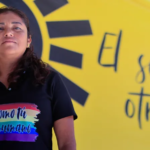
Rafael Nadal will start his French Open return – and expected farewell to the tournament he has dominated – with a first-round match against German fourth seed Alexander Zverev.
Spain’s Nadal, who has won the men’s title on a record 14 occasions, plans to retire later this year.
Zverev, 27, is one of the favourites for the title and tuned up by winning the Italian Open last week.
Britain’s Andy Murray has also indicated he will call it a day in the coming months and starts against fellow veteran Stan Wawrinka.
Murray, 37, has only played on the Roland Garros clay once since 2017, losing resoundingly in the first round to Wawrinka four years ago.
The Scot returns for the final time after recovering from an ankle injury.
Defending men’s champion Novak Djokovic starts against French wildcard Pierre-Hugues Herbert, while Iga Swiatek begins her bid for a third women’s title in a row against a qualifier or lucky loser.
The French Open, which is the second Grand Slam tournament of the season, starts on Sunday, 26 May.
Eye-catching draws for the Britons
Success for British players on the Paris clay has been scarce over the years and, based on form and pedigree, it would be monumental achievement if anyone could follow Sue Barker who remains the only singles champion from the nation in the Open era.
Katie Boulter is the highest-ranked British player and the 26th seed has been a handed a difficult-looking assignment.
Making her first appearance in the main draw, Boulter starts against former world number two Paula Badosa and could face former US Open champion and Roland Garros runner-up Sloane Stephens in the second round.
Belarusian second seed Aryna Sabalenka potentially lies in wait in the third round.
Boulter, 27, almost drew fellow Briton Harriet Dart in the first round.
Boulter was one of two seeds left in the pot to face 27-year-old Dart, who instead starts her second appearance in the main draw against Czech 27th seed Linda Noskova.
In the men’s singles, Cameron Norrie is the leading Briton by ranking and the 32nd seed will have a chance of facing Murray in the second round if he beats 57th-ranked Pavel Kotov.
Dan Evans landed Danish 13th seed Holger Rune, while Jack Draper faces a qualifier or lucky loser.
Who are the other big names drawn against?
While world number one Swiatek is the overwhelming favourite for the women’s singles, Sabalenka is expected to be the player who could end her clay-court dominance and faces 101st-ranked Erika Andreeva in her opening match.
Swiatek and Sabalenka are separated in the two halves of the draw, meaning they could not play until the final on 8 June.
In the second round, Poland’s Swiatek could face four-time major champion Naomi Osaka, who is back at Roland Garros for the first time since returning from maternity leave and starts against Italy’s Lucia Bronzetti.
American third seed Coco Gauff has been drawn in the same half as Swiatek, meaning they could face in the semi-finals.
Gauff, who lost to Swiatek in the last four in Rome last week, also begins her campaign against a qualifier or lucky loser.
In the men’s draw, Italian second seed Jannik Sinner plays American Chris Eubanks, while Spanish third seed Carlos Alcaraz takes on a qualifier or lucky loser.
Why Nadal was vulnerable to a difficult draw – analysis
Eyes strained as excitement built over where Nadal’s name would appear on the LED screen at Thursday’s draw ceremony.
Murmurs came from the audience when Nadal appeared next to a blank space reserved for a seed. Shocked gasps followed when Zverev was plucked out to fill the gap.
Nadal missed last year’s tournament for the first time in 19 years after a torrid time with injuries but is fit enough to return this year under a protected ranking.
The lack of matches over the past 18 months has seen Nadal drop to 276th in the world, leaving the former number one unseeded at Roland Garros for the first time.
That left Nadal vulnerable to the possibility of facing a high-ranked player. Landing Zverev – long one of the leading players on tour, adept on clay and in form – was about as bad as it could get.
Murray has also been handed an eye-catching draw in what feels like a fitting occasion – and despite winning just six games in their 2020 match, he might not necessarily fear Wawrinka.
Murray and Wawrinka once sparred for the biggest prizes and met in the 2017 Roland Garros semi-finals, a brutal match which exacerbated the career-changing hip injury which the Scot later needed surgeries on.
Wawrinka, 39, is also a three-time major champion like Murray, but the Swiss has not won back-to-back tour-level matches since the US Open in August.
Murray has not played much, though. He managed to avoid surgery on ruptured ankle ligaments in order to return to Roland Garros and only has three matches under his belt since Miami in March – losing twice.



